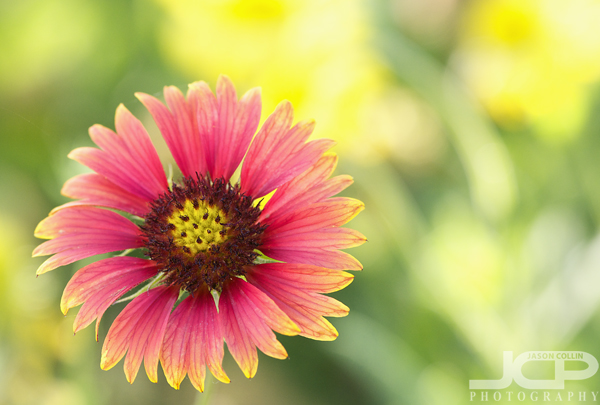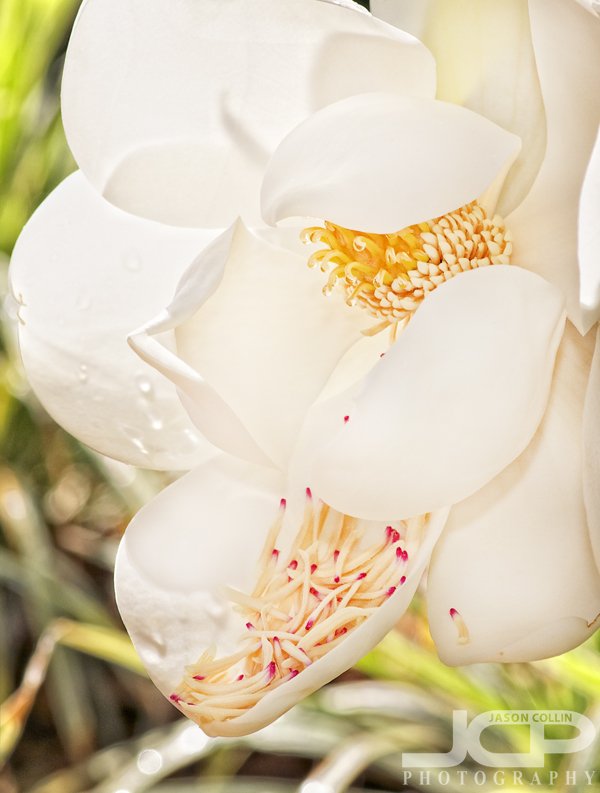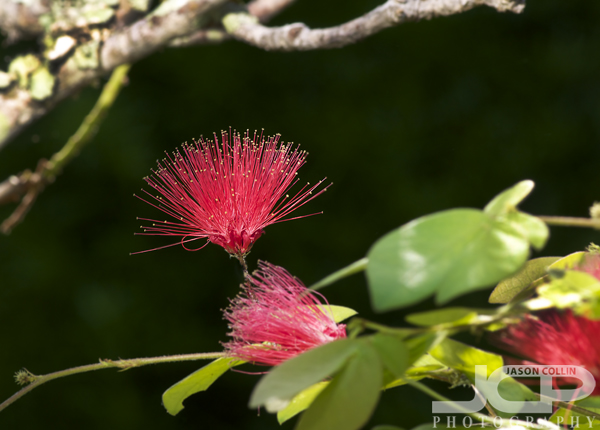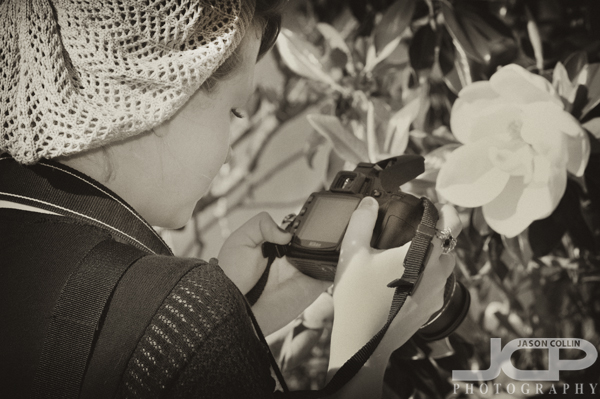 Nikon D300 Nikkor AF-S 105mm VR Micro f/2.8G @ f/8 ISO 640 1/25th natural light
Nikon D300 Nikkor AF-S 105mm VR Micro f/2.8G @ f/8 ISO 640 1/25th natural light
I made these macro flower photographs during a recent DSLR Photography lesson with a student at Florida Botanical Gardens. I was of course focused on teaching her, but I did have a few moments to shoot along side her after I helped her get her camera set to make a similar shot. Sometimes I used my Nikon Speedlight SB-600 on and off camera, sometimes, like above, the natural light at 8am was good enough.
 Nikon D300 Nikkor AF-S 105mm VR Micro f/2.8G @ f/11 ISO 200 1/200th strobist: SB-600 on cameraThe above magnolia flower was offering parts of itself, or getting rid of parts of itself, in a very interesting manner to me. I wonder how often a magnolia flower's lower petal aligns just right so that it can catch those stems? Maybe it is not uncommon?
Nikon D300 Nikkor AF-S 105mm VR Micro f/2.8G @ f/11 ISO 200 1/200th strobist: SB-600 on cameraThe above magnolia flower was offering parts of itself, or getting rid of parts of itself, in a very interesting manner to me. I wonder how often a magnolia flower's lower petal aligns just right so that it can catch those stems? Maybe it is not uncommon?
 Nikon D300 Nikkor AF-S 105mm VR Micro f/2.8G @ f/11 ISO 200 1/60th strobist: SB-600 off camera TTL modeThat red flower seems almost bioelectric to me, like it is plugged into electricity somewhere and at night would light up like a flower found on Pandora. I considered a closer crop of the flower, but wanted to included background elements to show its seeming desire to remain unseen by the passerby despite being so pretty.
Nikon D300 Nikkor AF-S 105mm VR Micro f/2.8G @ f/11 ISO 200 1/60th strobist: SB-600 off camera TTL modeThat red flower seems almost bioelectric to me, like it is plugged into electricity somewhere and at night would light up like a flower found on Pandora. I considered a closer crop of the flower, but wanted to included background elements to show its seeming desire to remain unseen by the passerby despite being so pretty.

